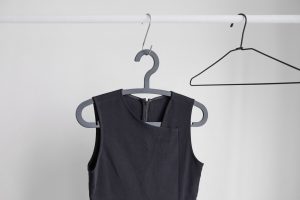Where Does the Fat Go When Corset Training? (All You Need to Know)
Do you know where the fat goes when corset training? It gets pushed in and flattened by the tightness of the fabric. Corsets are held together by a lace or closure system. You can tighten the strings or hooks if you want a thinner body shape.
The science of proper shapewear has many benefits. It can give you a shapely and streamlined look. If you wear it over tight-fitting dresses, you won’t notice your muffin top. Nor does it show any fat bulges or folds that make you ill at ease.
Besides the hourglass shape that you’ve always wanted from corset training. Corset training compresses the fats around your belly.
If you want to know more about corset training and its science. Don’t stop reading below and get all your questions answered!
Table of Content
Does Corset Training Cause Fat Loss?
The short answer is no. The long answer is that regular exercise, nutrition, and calorie deficit causes weight loss. All corset training does is it shapes your body perfectly.
I’m sure this has got you thinking. Why do people indulge in corset training? Here’s why.
Even though there’s no reliable fact or proof that corset training works. It does what it does best. And that is pushing your upper and lower abdomen muscles in. When that happens, it gives the appearance of a flat and toned tummy.
Corset training even targets your waist to make it look slimmer and curved.
The fats around the belly and waist area get squished under the corset’s tight fabric. If you have aches and soreness after removing the corset. It’s because you’re restricting proper blood flow and mobility in that region.
A good way to reduce discomfort from corset training is to loosen the fit.
Does Corset Training Work?
There are a few reasons why science shuns corset training for the harm that it does to the human body. Where does the fat go from corset training? Does corset training reduce appetite? Can you injure yourself from corset training?
You’ll get all your answers here, backed by science!
1. Shortness of Breath
Imagine wearing a tight top to the gym or yoga. It is bound to restrict your movements. How is a squat or even running possible on the treadmill with something pressed up against your skin?
Tight clothes, of any kind, can make you feel nauseated and uncomfortable. Corset training claims to give you a more flattering look in less time. That means you will have to wear the corset trainer while you’re working out.
Wearing it will reduce your breathing capacity as a default. It restricts movement 100%. You only have to look at a few videos on YouTube of women training in corset trainers. Then you’ll know it’s not as easy or “healthy” as it looks.
If you notice signs of shortness of breath or gasping. Or you are experiencing difficulty in breathing. Then you need to take off that corset trainer right away.
There’s still hope. You can wear corset trainers out of the gym. For dinners, parties, events, etc. Wearing a corset trainer for a short period of time has no such side-effects.
2. Dangerous Loss of Appetite
A waist trainer squeezes your internal organs inward in order to trim the body mass.
From the outside, you may look thin and curvy. However, on the inside, it restricts your stomach and affects your digestive tract. Including the kidneys and liver. Even your urinary bladder as you’ll notice you’ve started to pee more often.
Due to which, you eat less due to a significant appetite loss. The corset trainer is so tight that you’ll feel bloated and full after eating only a few bites. That’s why most go for this kind of weight loss motivation.
There’s a common misconception that eating less causes drastic weight loss. But that isn’t so. This health article suggests that you need to add (not subtract) to your weight loss diet. Include healthy foods such as fruits and vegetables, or chicken or other natural sources of proteins.
Even if you eat less during corset training, you will someday have to take the corset trainer off. And when you do that, you’ll go back to your normal eating routine. And you’ll quickly return to your previous weight and shape.
Even if you’ve lost a few pounds of weight, it’s most likely water weight.
3. Fat Redistribution
Lots of women want to get rid of the fats in the middle abdomen region. That’s where the muffin top and side handles grow from. Once you slip into a corset trainer, it’s this very same mid-section that gets flattened and shaped.
If you have a lot of fats in the mid-section, it moves up or below the corset. The best way to cover up the bulging after wearing the corset is with high-waist jeans. It hides the bulge of the belly and makes you look slimmer and curvier.
In some corset trainers, you get to decide where the fat goes. This depends on the style and shape of the corset and your body type. There are different types of corset trainers for this very same purpose.
You can buy an underbust or an overbust corset. An underbust corset helps you accentuate small breasts. It pushes the fat upwards to give you more volume to your breast shape.
Overbust corsets are longer than underbust corsets. They give you padding in the bust all the way down to your waist. This acts as compression for your bust and your stomach. So it offers slimming shaping for women with large breasts.
You can also accentuate your hips wearing a longline or waspie corset. It pushes the fat down to add more volume to your hips and buttocks.
But do all corsets redistribute body fat? That is not always true. This depends on the fabric and spring system of the corset. You can adjust the spring of the corset garment from the waist and tummy circumference.
You can allow the corset to sit on your natural body shape. There’ll be no squishing of the skin or any excess fat being pushed down or pulled up. All this will give you is a smooth and flattering body shape with optimal compression.
How to Find the Right Corset Size?
You can’t expect to buy the best corset trainer by feel. You need to measure your body size for the perfect fit and style. Corset sizes are different from normal clothing sizes. So you can’t rely on those numbers to get you the proper size and fit.
It’s obvious why they are different because your normal clothes won’t fit you like a corset. A corset trainer is supposed to hug you tight. Your normal clothes don’t do that.
I’m listing down all the areas where you’ll need to take your measurements. You can take these measurements yourself or have someone else take them for you.
If you want to buy a tighter corset for corset training, go 2-3 inches smaller than your actual size. You can reduce your natural waist and upper hip size. Keep your underbust and torso measurements the same.
If you’re buying an overbust corset, you can subtract a few inches to reduce breast volume.
Underbust
Wrap the tape around the line where your bra ends, under the bust. The measuring tape must be parallel to the ground. And make sure you don’t tighten the tape to write down a small number.
Natural Waist
Wrap the tape around the line from where you can bend sideways. This line is usually from where, if you have side handles, it occurs. If you still can’t figure it out, wrap the tape around your midsection - an inch above the belly button.
Upper Hip
Wrap the tape around just below your hip bone. This is usually from where you bend to sit down on a chair. If you buy a standard corset, this is where the corset ends to avoid tugging or pulling as you sit down.
Torso
Lastly, this is the distance between your breast to your upper thigh. Do not take this measurement standing. You’re supposed to sit straight in a chair and drag the tape between your breast and upper thigh on the right side.
Final Thoughts
Whether you’re wearing a corset for fashion, support, or weight loss. You know now where and how the fat gets redistributed for you to slide into the corset. If before today you thought corset training causes weight loss, you stand corrected.
Corset training is a trending health topic. If you’re already lean and curvy, chances are your skin is not going to get squished at all. But for women with a muffin top and/or side handles, it’s a different story.
Wearing extremely tight corsets can cause pain, nausea, acidity, and bloating. You shouldn’t exercise in them. They don’t make the best sleeping wear either. They can cause organ damage when worn for long periods of time.
Decide what your shaping level should be. Corsets can be firm, supportive, and shapely. But they can also be too tight, restrictive, and stiff. If you’re interested, go for a firm and supportive corset. It improves posture and won’t stop you from breathing naturally!










